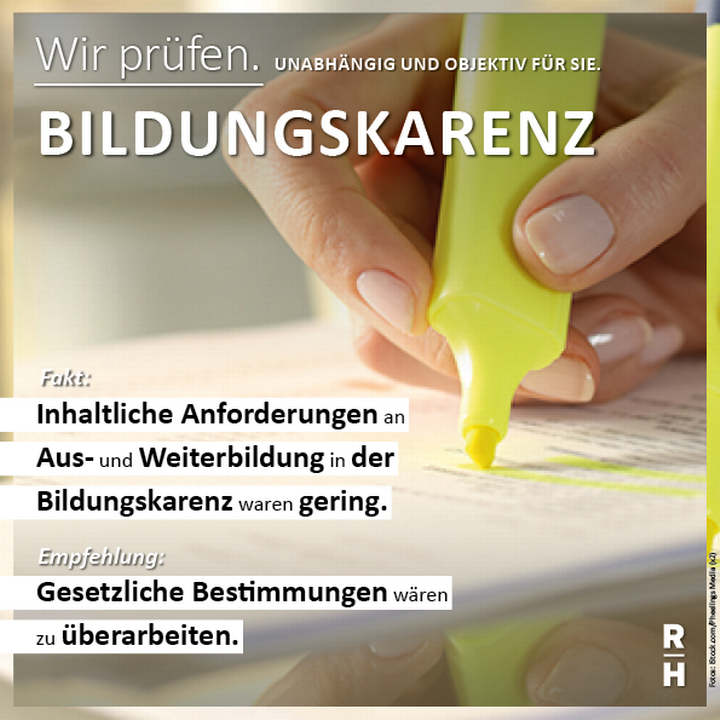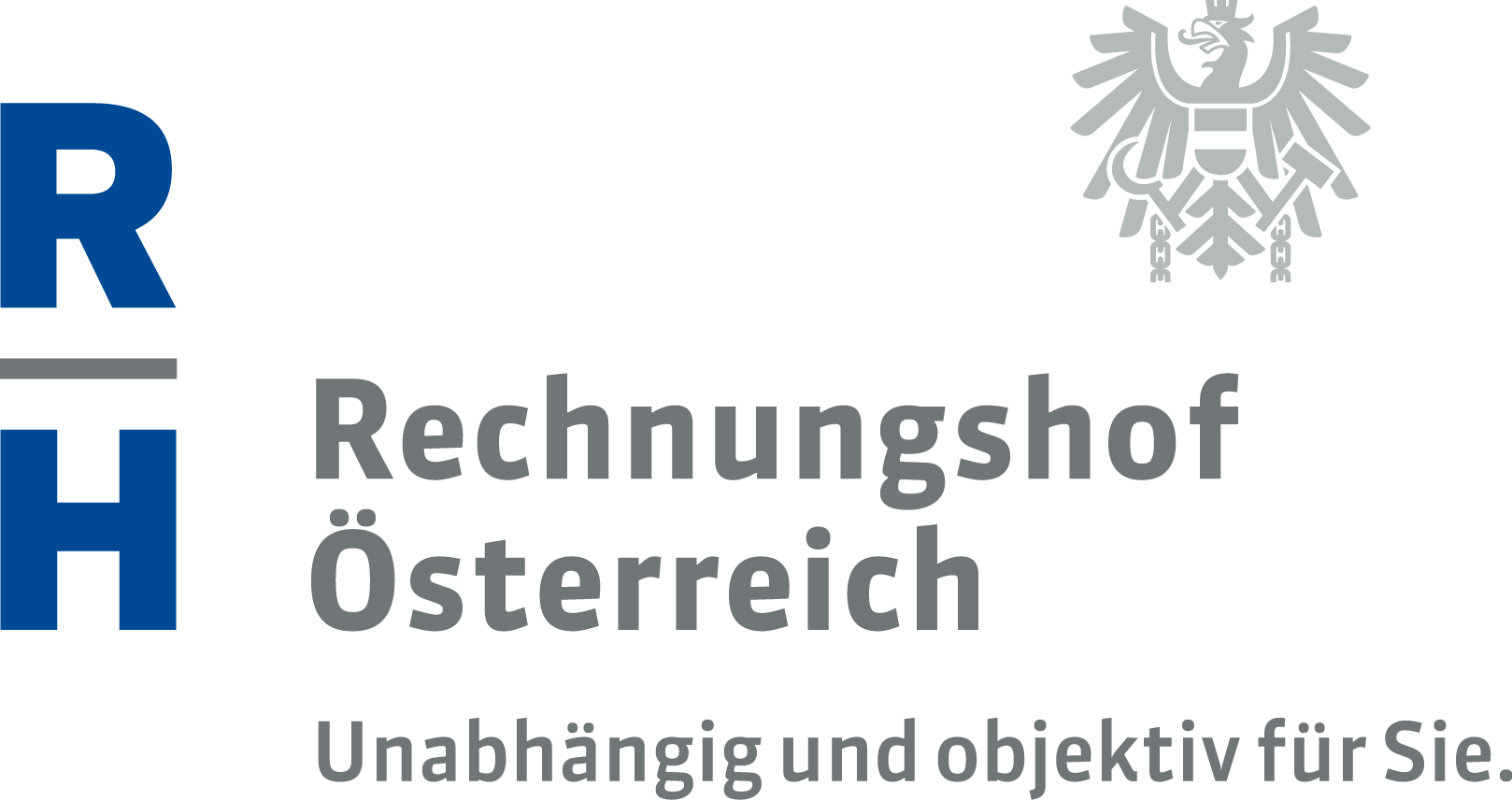Educational leave reform needed

Educational leave allows for training and further education of people who are already employed and want to increase their chances on the labour market. They receive continuing education allowance financed with funds from the unemployment insurance scheme. In 2021, an average of around 14,000 persons made use of this labour market policy instrument – twice as many as was the case in 2010. Expenditure amounted to EUR 295.7 million in 2021.
In its report on "Educational Leave" published today, the Austrian Court of Audit (ACA) sees substantial need for reform, as the requirements for training and further education in terms of duration and content were so low that educational leave could also be used for courses that required little effort and were not very relevant for the labour market as well as for time off from working financed by public funds.
Educational part-time employment proved to be the much more cost-effective instrument. Among the recipients of the allowance, the employment rate tended to be higher after educational part-time employment. The audited period spanned the years from 2019 through mid-2022.
Educational leave was introduced in 1998. Employees have the opportunity to take leave from work for training and further education purposes. For the duration of the leave, the person receives a continuing education allowance, which is equivalent to the unemployment benefits and generally amounts to 55 per cent of the previous net income. The Public Employment Service Austria (AMS) is in charge of processing this service.
Initially, a period of previous employment amounting to three years was required in order to apply for educational leave. The amendments introduced in 2008 and 2009 reduced this period to six months – and rendered educational leave more accessible. The model enjoyed greater and greater popularity: the number of allowance recipients doubled from 2010 to 2021.
Expenditure on continuing education allowance was almost three times as high in 2021 as in 2010. In the course of the COVID-19 pandemic, the disbursement volume increased by 40 per cent. Including social insurance contributions, the AMS disbursed a total of about EUR 295.7 million in 2021. Overall, the instrument was used more by persons with an already high level of educational attainment. Employees in the healthcare and social services sector took educational leave the most.
Low requirements in terms of content
In order to receive this continuing education allowance, applicants have to take part in further education programmes for a certain number of hours. However, the law does not define the type of further education programme and contains low requirements in terms of content. Merely courses that have a clear recreational character are excluded. The AMS requested transcripts of records for academic studies, but requesting certificates of attendance for courses was not standard procedure. In practice, failure to produce evidence only led to recoveries of continuing education allowance in exceptional cases.
The ACA acknowledges the potential of the instrument of educational leave, as it is suitable to provide persons interested in education with material security for training and further education and thus to support individuals’ progression on the labour market as well as to create a societal benefit for the business location. It expresses concern that it can be used for courses that require little effort and are not very relevant for the labour market as well as for time off from working financed by public funds. The ACA recommends to revise the statutory provisions. The objective should be a clear focus on improving the labour market position of the allowance recipients.
The majority did not improve their income situation after educational leave
As part of the ACA’s audit, the AMS analysed the effects of educational leave on the labour market status and income situation. On average, 78 per cent of allowance recipients were employed three years after their leave. On the whole, fewer women than men had a job. An average of 53 per cent of allowance recipients had a higher income three years after their educational leave. However, since two thirds of allowance recipients had not improved their income one year after their educational leave, the ACA expresses concern that the withdrawal from working life may have adverse effects on the labour market position of those affected.
Better employment rate after educational part-time employment
In contrast to educational leave, employment is not interrupted in the case of educational part-time employment. Employees reduce their working hours by up to 50 per cent for the purpose of further education. Expenditure amounted to about EUR 24.1 million in 2021. In 2021, 4,063 persons were in educational part-time employment and received a part-time education allowance. The employment rate of persons after educational part-time employment tended to be higher than that of persons who had taken educational leave. Also the income development was more favourable in the case of educational part-time employment than in the case of educational leave. Three years after their educational part-time employment, 66 per cent of allowance recipients earned more than before.
Share of women on educational leave tripled
Three quarters of the 13,912 recipientsof continuing education allowance were female in 2021 – their number had tripled since 2010. On average, women also received a higher amount of continuing education allowance than men: EUR 12,050 versus EUR 8,074, which was due to the fact that women’s educational leave was longer than men’s.
From 2017 onwards, educational leave was increasingly taken directly after parental leave. On the market, there were more and more course providers using the slogan “extended baby break” that advertised with the financial assistance from public funds. The number of persons who took educational leave immediately after their parental leave increased tenfold within merely four years. In 2021, 99 per cent of persons receiving allocations directly after their parental leave were female – 7,172 persons expressed in absolute terms.
More than half of all women who started taking educational leave in 2021 had just come out of parental leave. Referring to the low requirements regarding the content of the further education programmes, the ACA recommends to set an ambitious further education commitment.
- pdf Datei:
- 2,524.6 KB
- Umfang:
- 86 Seiten
Report: Educational Leave (in German)
From May to August 2022, the ACA audited the labour market policy instruments of educational leave (with the benefit of continuing education allowance) and part-time educational leave (with the benefit of part-time education allowance). The aim was to assess
• whether the instruments were geared to the needs of the labour market and
• whether the conditions for their use and the way they were implemented ensured that the financial resources were used appropriately and accurately.
The bodies audited were the Federal Ministry of Labor and Economy and the Public Employment Service. The audited period essentially spanned the years 2019 to mid-2022; in order to present longer-term developments, the ACA also used data from 2010 onward.


